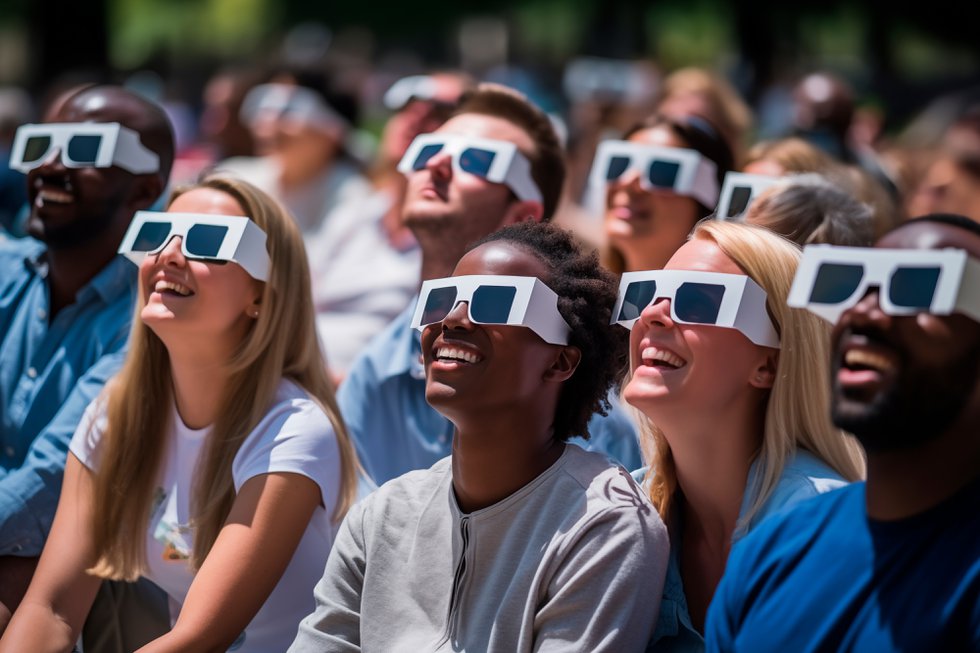- Introduction
- Overview of the importance of eye safety during a total solar eclipse.
- Explanation of the dangers of looking directly at the Sun without proper protection.
- Importance of using specialized eye protection such as eclipse glasses or handheld solar viewers.
- Types of Eye Protection
- Description of eclipse glasses and handheld solar viewers, emphasizing their compliance with safety standards.
- Indirect Viewing Methods
- Instructions on using pinhole projectors and homemade eclipse projectors as safe alternatives to direct viewing.
- Equipment Compatibility
- Clarification on the use of eclipse glasses and handheld viewers with cameras, binoculars, and telescopes.
- Expert Recommendations
- Importance of seeking advice from astronomers and using proper solar filters with optical devices.
- Safety Guidelines During a Solar Eclipse
- Detailed safety guidelines for viewing the Sun during partial eclipse phases and totality.
- Skin Safety
- Brief advice on protecting skin from sun exposure during an eclipse, including sunscreen and protective clothing recommendations.
Conclusion
- Summary of key points regarding eye safety and skin protection during a total solar eclipse.
Additional Resources
- Links to more safety tips from authoritative sources like the U.S. Food and Drug Administration.
This blog article will provide readers with a thorough understanding of the precautions and methods necessary to ensure eye safety during the awe-inspiring event of a total solar eclipse.
Keep visiting QuickShare and write to us in the comments below.

